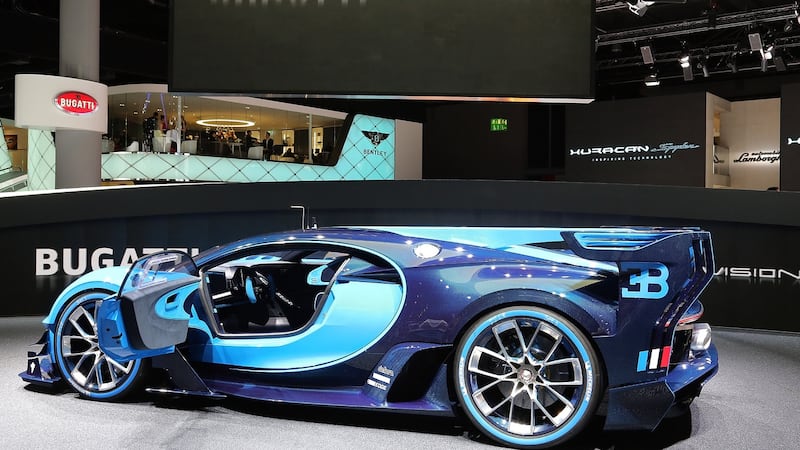Bugatti will reach back into its history for the name of its Veyron replacement, slated to debut at next March's Geneva motor show.
The Franco-German car company today confirmed it would name the faster, lighter Veyron replacement the Chiron, after the Monagasque driver Louis Chiron who won the world's major grands prix for the brand in the 1920s.
Bugatti has taken more than 100 orders for the Chiron, even though nobody has seen it yet and even though Bugatti refuses to acknowledge reports of a hybrid powertrain, much less performance data.

Bugatti did show its Vision Gran Turismo concept at this year's Frankfurt motor show in September, with sources at the time insisting the Chiron would take its visual lead from the concept's new design language.
“The development brief for the Chiron can be summarised in one sentence, which is probably the shortest in the history of the automobile: we want to make the best significantly better,” Bugatti (and Bentley) president Wolfgang Dürheimer said. “The Chiron will set new standards in every respect. We will continue to produce the world’s most powerful, fastest, most luxurious and most exclusive production super sports car. This is the claim of Bugatti and our customers.”
Prototypes
Chiron prototypes have been seen testing in Los Angeles and
Germany
, as well as at the Volkswagen Group-owned Nardo proving ground in southern
Italy
.
Bugatti confirmed the prototypes were being tested “on the road in several continents”, and insisted no other super sports pretender was subjected to such a comprehensive test and development program.
The Chiron gained traction over the mooted four-door super sports sedan Galibier proposal a year ago on the grounds of cost and development times, sources said.
The Chiron's confirmation, alongside confirmed Le Mans and World Endurance Championship programs for both Audi and Porsche, provides hope that, post-Dieselgate, Volkswagen Group budget cuts will spare some of its sexier brands. Insiders say it was saved from the cost-cutters' axes because its development was too far along.
Dürheimer refused to comment on whether the Chiron would come in two variants: one with petrol power and one with a hybrid powertrain, even though former Volkswagen Group chief executive Martin Winterkorn insisted the VAG technical flagship brand would run the petrol-electric technology.
“The feedback from our customers concerning the Chiron is outstanding,” Dürheimer said. “More than 100 customers have already ordered the Chiron despite the fact that they have had no opportunity so far to experience the fantastic driving properties of the Chiron.”
The Chiron is likely to use a development of the monster 1500 horsepower, 8.0-litre, W16 quad turbo motor from the Veyron, coupled to a seven-speed, dual-clutch transmission and all-wheel drive.
It will be built around a new carbon-fibre monocoque that will share obvious lineage with the Veyron, but will be lighter and more agile.
Sources say it won’t lose anything in terms of luxury or speed, with a highly luxurious cabin merged to cutting edge connectivity and electronics systems in the car.
“In Louis Chiron, we found a worthy patron for a new model in the history of our brand,” Dürheimer said. “The name of the best racing driver and the most successful Bugatti driver of his time for the best super sports car of the present day – that is the ideal combination.”
Hill climbs Louis Chiron was born in Monaco in 1899 and rose from being a hotel worker's son to being a general staff driver (including for leading marshals Petain and Foch) in the first World War before opening a car dealership in Nice, France.
He began winning hill climbs in a Brescia Bugatti and started winning races in a Bugatti Type 30. His turning point came when he met Alice and Alfred Hoffman, heirs to the Hoffman-La Roche pharmaceutical fortune. Hoffman bought him a Type 35 – which was about to become the world's most successful racing car – to race in 1926.
He won the French Grand Prix in a Type 35 B in 1927 and became Bugatti's lead works driver in 1928, winning races and hill climbs all over Europe. and in 1931 became the only native Monaco driver to win his home Grand Prix.
He also drove for Ferrari and Mercedes-Benz and in 1955 he became the oldest man to drive in a Grand Prix, in Monaco at the age of 56.















